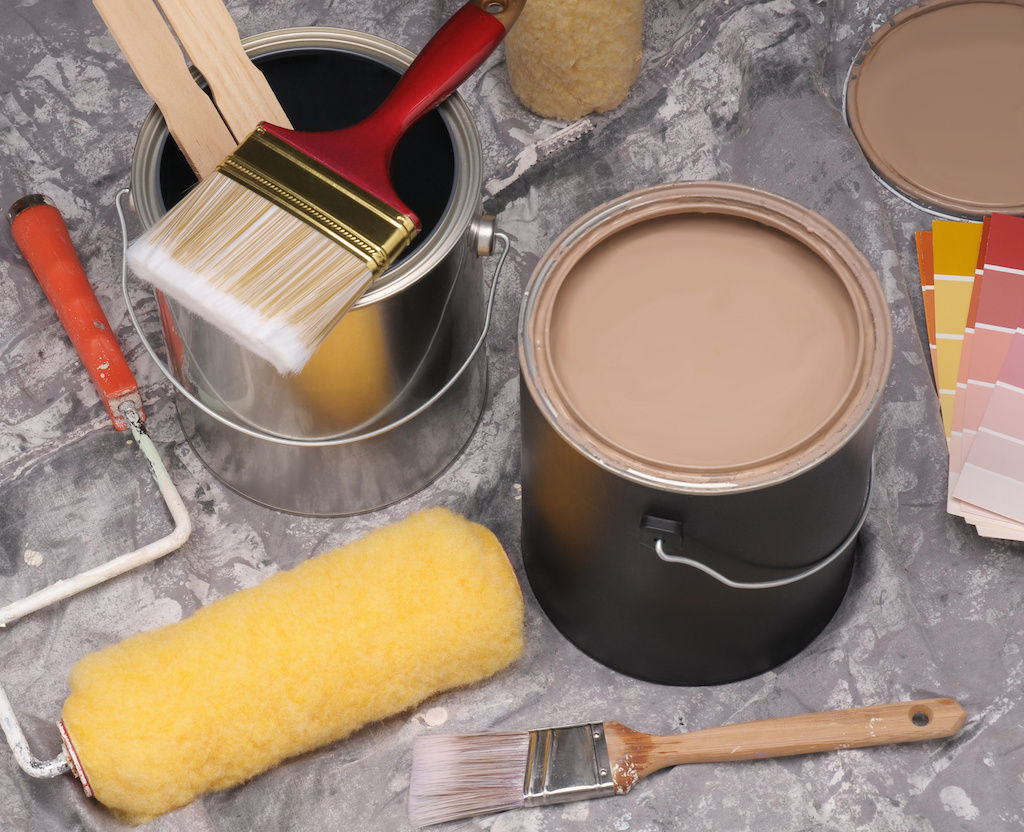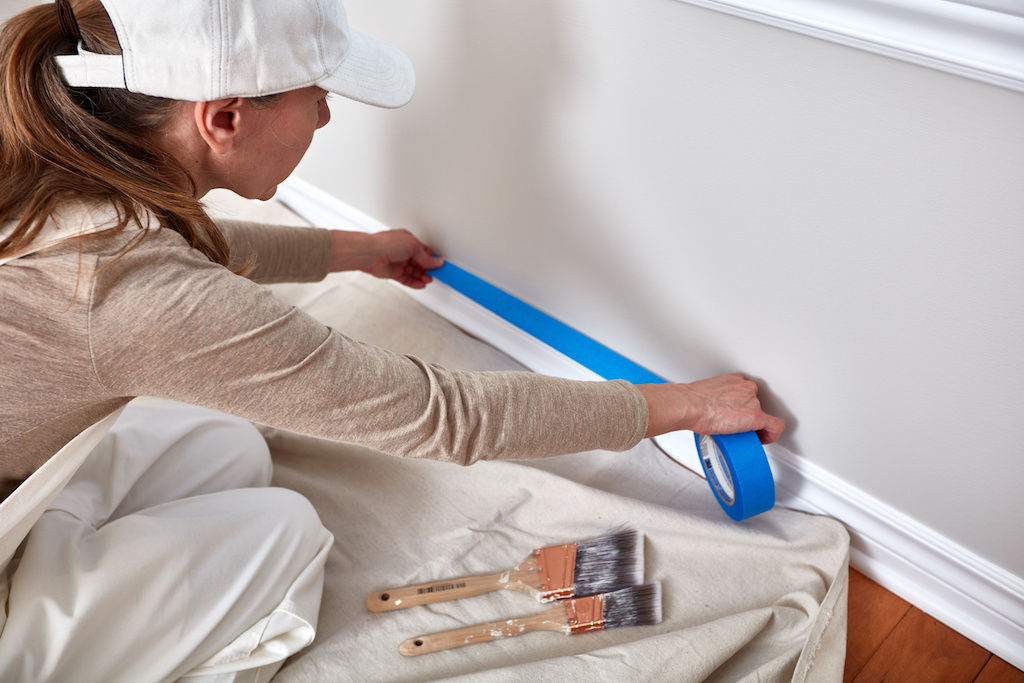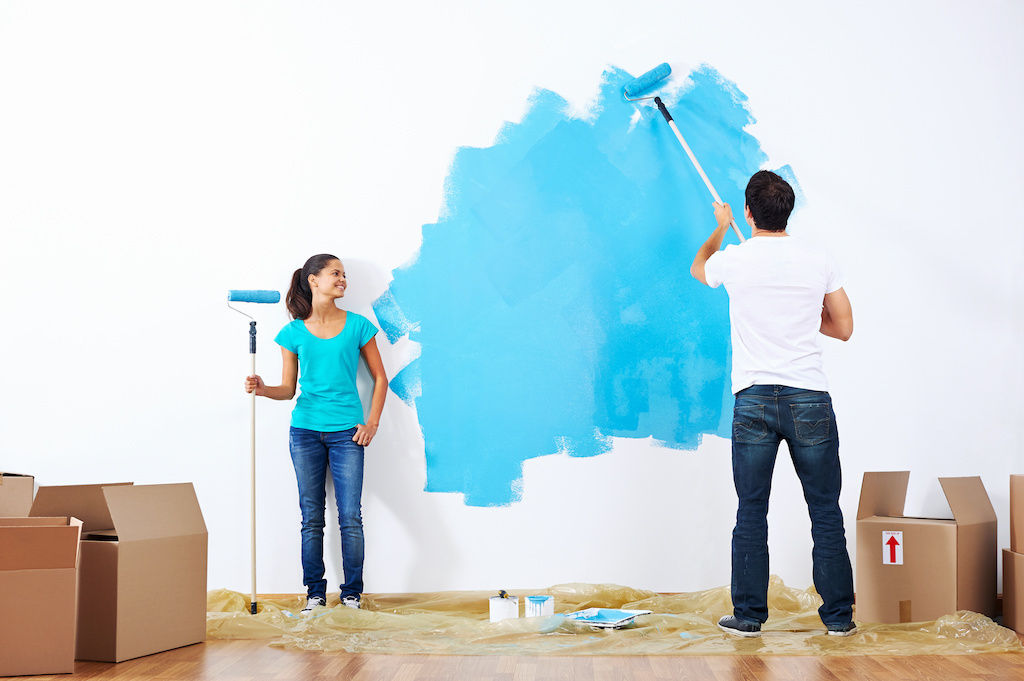National Color Therapy Month: How to Paint a Room to Set the Right Mood in Your Apartment
“Color is a power which directly influences the soul.” – Wassily Kandinsky
Russian Painter and Art Theorist Wassily Kandinsky may have been speaking from the heart, but the concept of color has been studied for decades by Applied Environmental Psychologists, those who study the effect of surroundings on our emotions. And that includes color.
For National Color Therapy Month, it’s important to know how important color is to our moods and the vibes we desire in our apartments. These tips will cover how to paint your walls properly while also diving into why some colors are better than others for certain needs.
Ask First, Paint Later
Before whipping out the paint brushes, make sure to read your apartment lease thoroughly or ask your apartment management team if painting is allowed in your place. One thing’s for sure: Losing your security deposit will affect your mood, no matter what color you choose. So, ask first, paint later.
Start with Supplies
Now that you’ve gotten the “go-ahead,” you can start gathering supplies from your local home improvement store, online, or a generous friend:
- Safety glasses or goggles
- Paint
- Paint brushes/rollers/roller sleeves
- Extension pole for rollers
- Painter’s tape with an applicator
- Paint trays with legs that hook to a ladder
- Paint tray liner (DIY tip: Just place your tray in a kitchen garbage bag for easy cleanup later)
- 5-gallon bucket for combining paint
- Stirrers for paint
- Small putty knife (to seal tap flush to creases)
- Two-step ladder
- Cotton drop cloth (better than plastic, as plastic stays wet and causes a mess)
The amount of supplies needed will definitely vary based on how much of a room you’ll be painting. Some apartment communities only allow an accent wall, or perhaps that’s all you’re going for. Either way, base your supply needs on the extent of the project.
Choose Your Color Wisely
This is the most important part of the painting journey: choosing you paint color. There is a body of research in the scientific press that addresses how seeing particular colors on surfaces influences how you think and behave. According to renowned Applied Environmental Psychologist Sally Augustin of Design with Science, general findings focus on three particular attributes of colors:
- Hue: the name given to a collection of wavelengths (reds, oranges, yellows, etc.)
- Saturation: how pure a color is (less saturated = more greyish; sage green is less saturated than Kelly green)
- Brightness: how much white is in a color (the color we think of here is baby blue)
“So, a color that is not very saturated but is relatively bright is relaxing,” Augustin says. “While a color that is very saturated but not very bright rather energizes us.”
Blue: She adds that cultures form associations to particular hues. For example, people generally link being trustworthy and dependable to the color blue. “We also link blue to restfulness, so it’s great for a bedroom,” she says. Overall, blue tends to be the most popular color, especially if it’s a lighter blue, as it makes a space seem bigger and more peaceful.
Red: Red has been shown to give a “burst” of strength, Augustin says. While you may not be painting your apartment community’s fitness center, it would be smart to put the color red in a place where you might lift weights. Red does have its disadvantages, as it causes some disruption to cognitive work. In other words, red has more physical than mental benefits.
Green: “Green has all sorts of advantages in the cognitive work setting,” the expert suggests. “Seeing different shades of green has been linked to enhance creative performance and creative thinking. So, if you’re wondering what to paint your office after getting rid of red, paint with greens.”
Warm Colors: It’s also true that seeing and being in an environment with warmer colors is good for socializing and hosting a dinner party at your apartment. “We tend to have better feelings about others when we’re looking at warmer colors, say, in a living room,” Augustin states. What constitutes as a warmer color? “Colors that you might see in a fire at some stage of its life: reds, oranges, neutrals.” Some might say autumn colors are warm colors, and they are, not including the greens we see in pine trees. Think more about the changing leaves in autumn for a warm color palette.
Yellow: Now, onto the infamous yellow. Augustin says that yellow is the color people are least likely to claim as their favorite. However, those who do love the color yellow are much more likely to draw a stronger attachment and bond to it, thus making them happy to find it in an apartment home. It is, however, risky if you’re trying to appeal to a wide array of people or even multiple roommates.
Ultimately, Augustin encourages anyone repainting their space to choose colors based on their own personal associations. If you don’t like blue, obviously avoid that color. Unless it’s a personal priority for you, try to avoid basing this important decision on what’s simply trending or fashionable. Go with your positive experiences and associations when it comes to choosing a color. After all, you’ll see it every day.
Prep to Protect Your Stuff
It’s inevitable. Excess paint is going to end up somewhere. Try to control where that “somewhere” is by putting down a cotton drop cloth, covering any kind of hardware (say, if you’re painting the kitchen or bathroom), and moving items either out of the room or to the center of the room. Before taping your baseboards with painter’s tape, make sure to wipe them down so that the tape will adequately hold. Use your painter’s tape applicator to quickly and efficiently tape off the trim of the room, and finish it by pressing down the tape with your small putty knife.
Clean, Prime, then Paint
Just like the baseboards, make sure to clean any clearly dirty surfaces before priming them. Primer will keep the paint layers from being absorbed into the surface, keeping the color vibrant and true. Start the painting process with a brush, as you can really get in where the ceiling meets the wall all around the room. Avoid lap marks by rolling the full height of the wall and keeping a wet edge. Then, wait for the paint to fully dry before pulling the tape from the baseboards, revealing that perfect edge.
Paint Care as You Go
To make painting easier during and after:
- Wear plastic safety glasses or goggles for protection
- Keep the room ventilated or wear a mask
- Store your brush in a plastic bag, plastic wrap, or in a paint brush cover
- Keep paint covered
- Save leftover paint or drop off your used paint cans at a designated drop-off site for eco-friendly disposal
Keeping Your Paint Color Consistent
To keep the color consistent throughout the room, a cool trick is to mix a few cans of the same color paint in a 5-gallon bucket. Pour from there. Then, take your time, and paint a small patch on the wall and let it sit overnight. That way, you can get a true depiction of how it will look having dried and with natural lighting, lamp light or overhead lighting. Augustin also says that, if possible, embrace any natural lighting you have, as it is a mood-booster, which leads to increased creativity and likeliness of getting along.
Other Blog Posts You Might Be Interested In
- Color isn’t the only thing that will boost your productivity when working from home. Try applying these six simple tips.
- Paint can definitely spruce up your apartment, but you can also upgrade your walls with these DIY projects.
- Don’t have a lot of money to spend on art? Here’s how to score affordable art for a picture-perfect place.
The information presented on or through this Website is made available solely for general information purposes. We do not warrant the accuracy, completeness, or usefulness of this information. Any reliance you place on such information is strictly at your own risk. We disclaim all liability and responsibility arising from any reliance placed on such materials by you or any other visitor to this Website, or by anyone who may be informed of any of its contents. Any reference to amenities, services, rules, policies, or procedures at a Greystar apartment community is general in nature, and each Greystar apartment community may have amenities, services, rules, policies, and procedures that differ from those referenced on this Website. Please consult with your Greystar apartment community for the exact amenities, services, rules, policies, or procedures applicable.
This Website may include content provided by third parties, including materials provided by other users, bloggers, and third-party licensors, syndicators, aggregators, and/or reporting services. All statements and/or opinions expressed in these materials, and all articles and responses to questions and other content, other than the content provided by Greystar, are solely the opinions and the responsibility of the person or entity providing those materials. These materials do not necessarily reflect the opinion of Greystar. We are not responsible, or liable to you or any third party, for the content or accuracy of any materials provided by any third parties.







